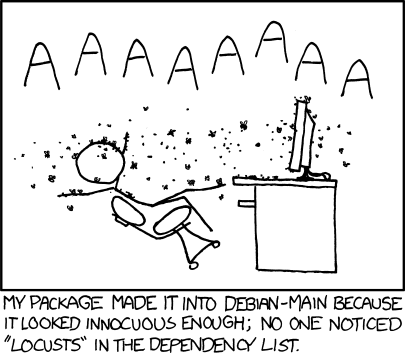Sep. 24th, 2010
For Pearl's special attention: a theory and a possibly useful source on early finger-spelling:
In a discussion of Ogham and its origin...
I don't think some of his conclusions, nor reasoning, stand up to the light of day. Especially about how deaf-mute signing must be finger-spelling, or how important absolute accuracy is.
I think he may have a point about the origin of Ogam in Greek, though, even if only in that a fairly sophisticated knowledge of phonetics went into the formation of Ogam. He also is completely correct that it's an inscriptional script, not one for everyday use.
In a discussion of Ogham and its origin...
The reader needs to do no more than to write out a transliteration of a few lines of the page at this moment under his eyes, to persuade himself that this script could not possibly have been invented or maintained as a medium of literary expression. Its only conceivable use is as a “gesture-alphabet,” like those used in heliography or flag-signalling, in the manual signs of the deaf and dumb, or in the Morse code. As such, it must have had another, literary alphabet in its background; for it would obviously be impossible for a people not possessed of a written alphabet to invent a contrivance so sophisticated.¹ The manual alphabet of deaf-mutes presupposes, among those who use it, ability to read and write fluently, and to spell with accuracy, in the current script of everyday life. We must emphasize the last condition, for the recipient of the signals must be able to understand them instantaneously; he can spend as long a time as may be necessary in puzzling out the sense of a misspelt or cryptical message in writing, but a misspelt gesture-message is lost forever unless it can be comprehended at the moment of delivery. It follows that the literary alphabet in the background must have had the same selection of letters as the cypher alphabet, no more and no less, in order to maintain the essential orthographical conventions already established between the correspondents.
...
The Venerable Bede, or some one writing in his name, put forth a small treatise called De loquela per gestum digitorum² [“On speech through gesture of the fingers”: my translation] which it is not altogether irrelevant to cite. This tract describes an elaborate method of signalling numbers and, upon that basis, of indicating letters by their numerical position in the alphabet.
1. I do not forget the African device whereby messages can be transmitted over long distances by means of drum-taps: but this involves no system of spelling. These taps are rhythmical conventions, whereby the intonation of certain stock sentences is reproduced. Though wonderfully ingenious, and developed to an art of great intricacy and flexibility by generations of expert drummers, there is nothing alphabetic in this vocabulary of pulsations, so that it has no bearing on our present subject (see further on this matter, A. J. H. Goodwin, Communication has been established, London, 1937, p. 233 ff.)
2. Migne Patrologia, vol. 90, col. 685.R.A.S. Macalister, Corpus Inscriptionum Insularum Celticarum, pp. v.f.
I don't think some of his conclusions, nor reasoning, stand up to the light of day. Especially about how deaf-mute signing must be finger-spelling, or how important absolute accuracy is.
I think he may have a point about the origin of Ogam in Greek, though, even if only in that a fairly sophisticated knowledge of phonetics went into the formation of Ogam. He also is completely correct that it's an inscriptional script, not one for everyday use.
